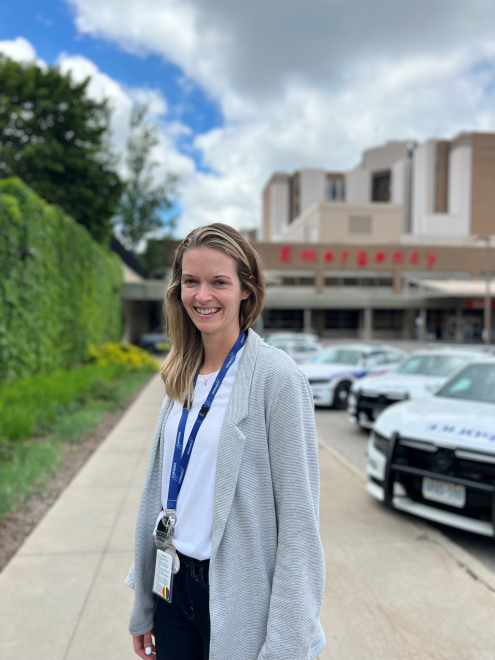May 18, 2023
(LONDON, Ontario) – Every year, the Victoria Day long weekend marks the unofficial start to “trauma season” - the time between Victoria Day and September 30 that accounts for some of the busiest months at London Health Sciences Centre (LHSC). During these four months, we see an increase in visits to our emergency departments due to serious, life threatening injuries.
One of the major causes of serious injury is motor vehicles crashes and this year, as many prepare to hit the road for vacations or cottage getaways, we want to emphasize the importance of safe driving.
“Motor vehicle crashes are the leading cause of serious injury for adults and children who are treated at LHSC,” said Jennifer Britton, Injury Prevention Specialist at LHSC. “In most cases, these collisions could have been prevented and there are simple steps that can be taken to ensure everyone is safe this summer.”
LHSC Injury Prevention Specialists recommend the following safety steps to reduce risk of injury and collision on the roads this season:
Reduce speed
Speeding is a contributing factor in one in four fatal crashes in Canada. Reducing vehicle speed has been proven to be effective in preventing crashes and reducing the severity of injuries. Even small reductions in speed can be significant.
Don’t drive impaired
Impaired driving, whether by alcohol or drugs, continues to be the single most important factor contributing to serious crashes. Recent statistics show that the number of police-reported drug-impaired driving (DID) incidents have increased by 43% from 2019 to 2020. Illegal drugs, cannabis, over-the-counter and prescription medications can all impact your judgement, coordination, and reaction time behind the wheel. Don’t drive impaired.
Avoid distracted driving
Driver distraction is a factor in about four million motor vehicle crashes in North America each year. It is estimated that drivers look at, but fail to see, up to 50% of the information in their driving environment when using their phones. Be responsible. Don’t use your phone to text or dial while driving.
Ensure all passengers are belted using a seatbelt or car seat
Seat belts and correct car seats based on the size of the child, save lives. In Ontario people not wearing seatbelts are 36 times more likely to be killed if they are involved in a crash. For children, using the right car seat that is installed correctly can reduce the risk of injury by 82%. On every trip, no matter the distance, make sure all passengers are belted using a seatbelt or car seat.
Quick Facts
- At 100 km/h, a driver can travel 150 metres in only six seconds. This means that a driver's eyes need to be closed for only three or four seconds before they could face disastrous consequences.
- A pedestrian struck by a car traveling at 50 km/h is almost six times more likely to be killed than a pedestrian struck at 30 km/h.
- In young drivers aged 16 to 25, almost half of motor vehicle crashes involve drug or alcohol impairment.
- Children are more likely to be struck by a car in areas with higher speed limits that’s why they have lower limits around schools and playgrounds.
The Trauma Program at LHSC wishes everyone a safe and enjoyable Victoria Day weekend.
Read more: Road safety – Parachute (parachutecanada.org)
For media inquiries, please contact:
Steve Robinson
Senior Media Relations Consultant
London Health Sciences Centre
519-685-8500 x 35947
media@lhsc.on.ca
